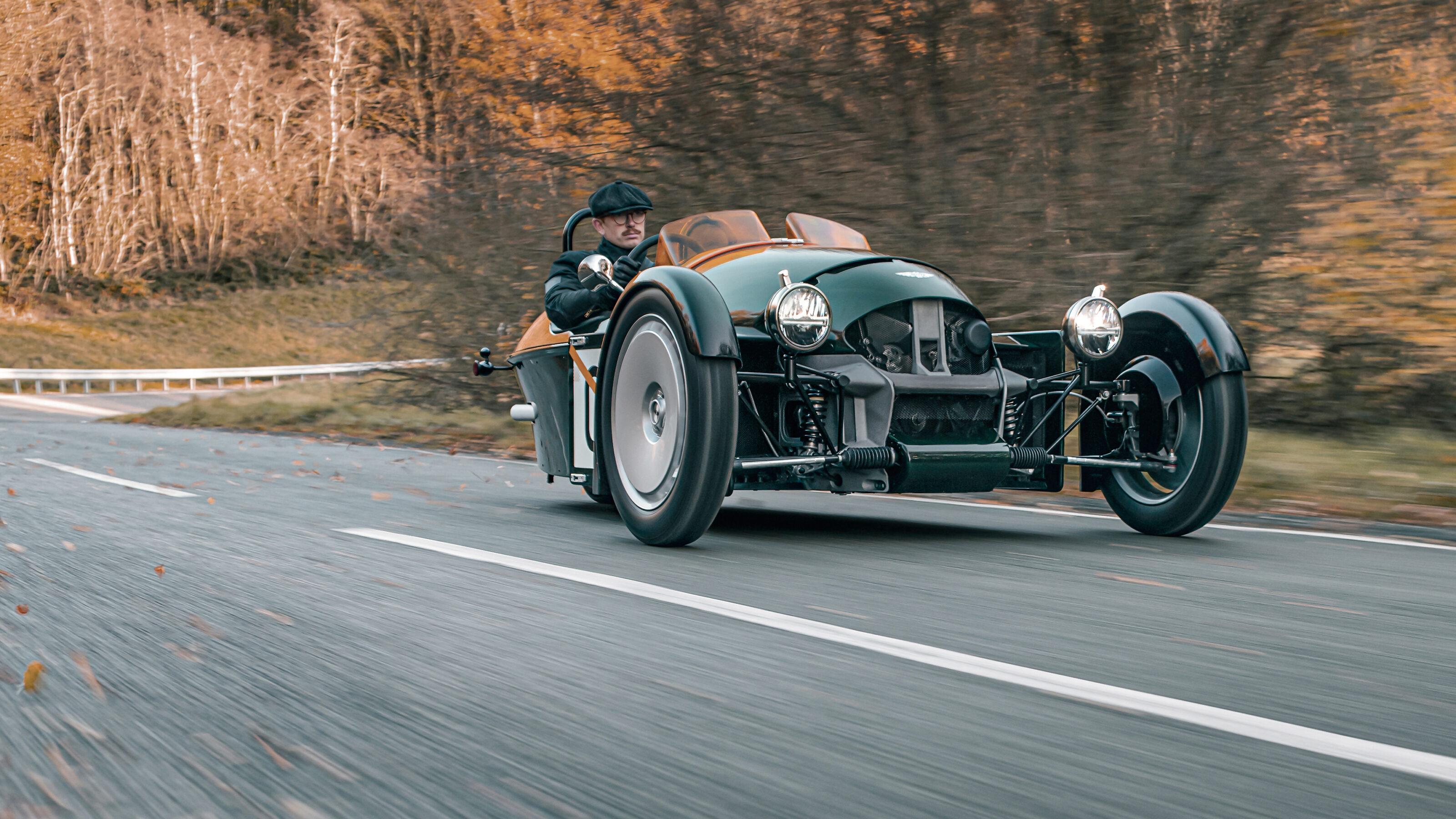Morgan was the car company time forgot. Founded in 1909, it started out building light and zippy three-wheelers that by the 1920s and 30s had forged a reputation for being highly effective budget sports cars.
Morgan built its first four-wheeled sports car in 1936 and kept it in production with remarkably few fundamental changes for more than 80 years.
It’s easy, then, to look at the new Morgan Super 3 and think that nothing has changed.
In fact, everything has changed. In form and function, the three-wheeled Super 3 might hark back to Morgan’s beginnings. But in terms of its engineering, technology and ambition, it’s a car designed from its three wheels up specifically to secure Morgan’s future. The Super 3 is a global Morgan, intended to be sold around the world. And yes, it’s coming to Australia.
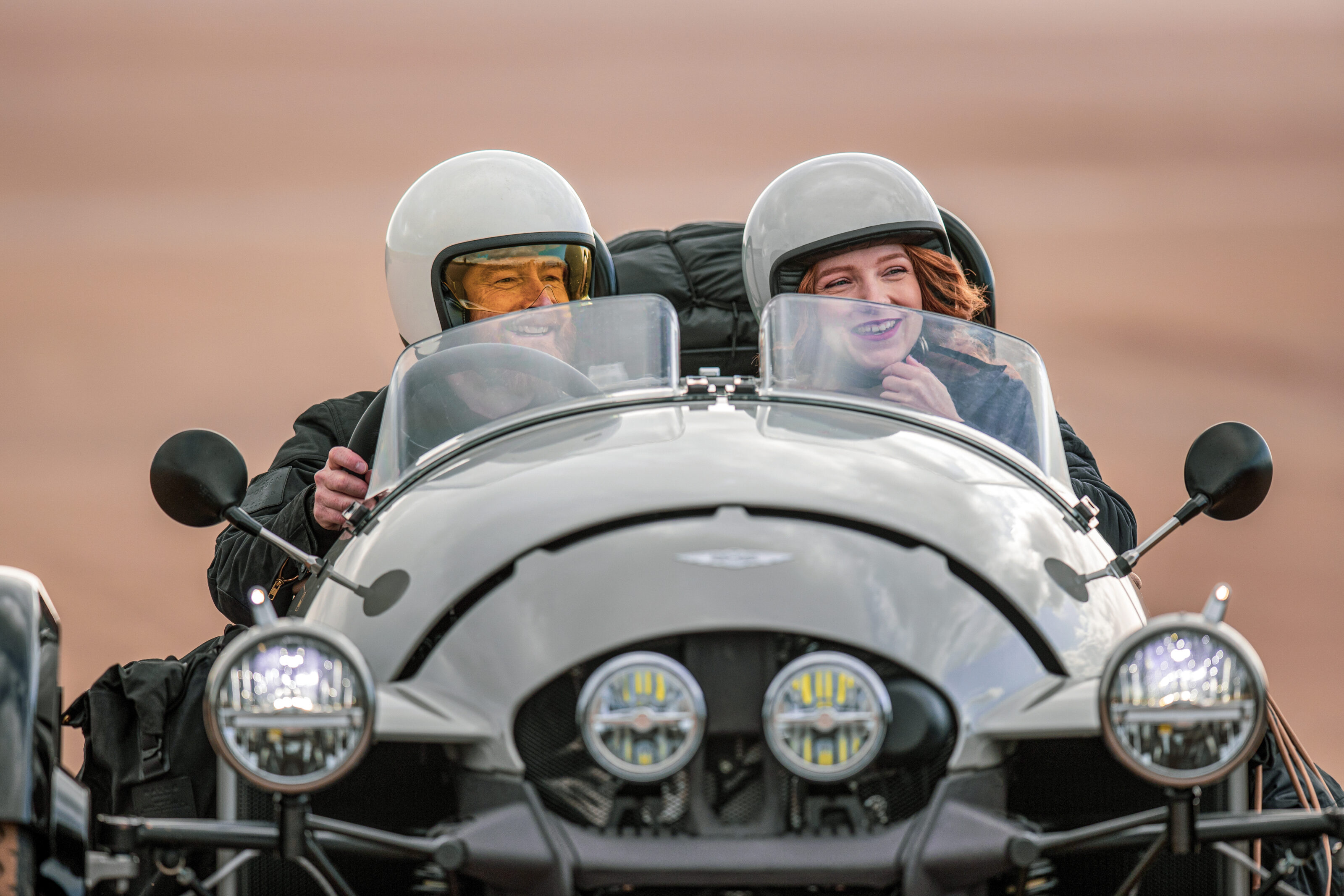
The Super 3 replaces the determinedly retro – and largely unexportable – 3 Wheeler launched in 2012, 70 years after Morgan ended production of its previous three-wheeled car.
The 3 Wheeler was powered by an air-cooled, American-made S&S V-twin motorcycle engine mounted across the front end, just like the Morgan three-wheelers built until 1939.
Its layout is pure vintage Morgan three-wheeler, with all the bodywork and mechanicals behind the front axle centreline. The execution is pure 21st Century, however.
One small example: To ensure the Super 3’s two round headlights could be placed low and well behind the leading edge of the front wheels, two small lighting structures protruding from each – nicknamed ‘snail’s eyes’ by Morgan design chief Jonathan Wells – ensure they meet global standards for lighting height and side visibility.
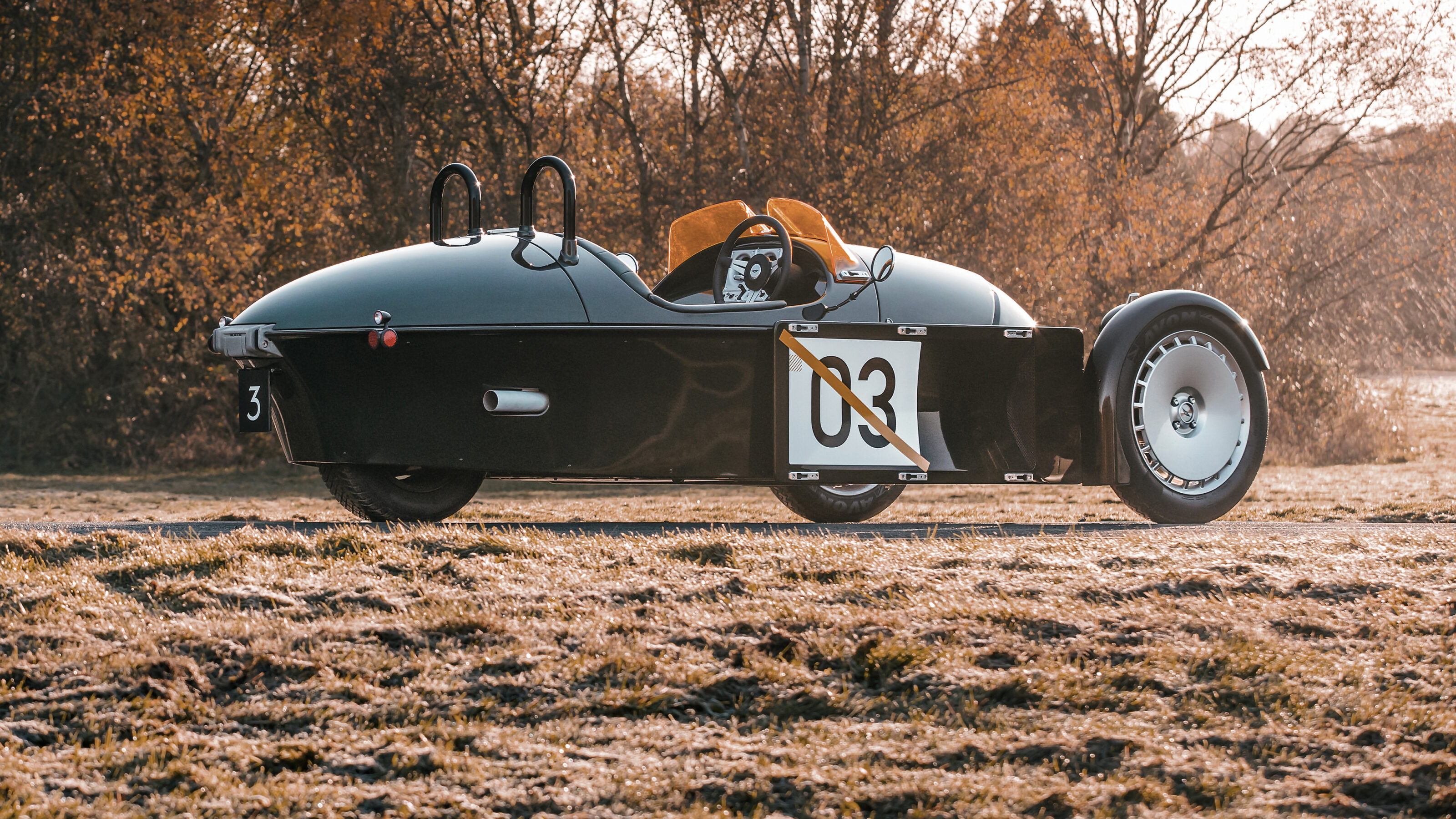
Then there are the specially developed 130/90 Avon Speedmaster tyres on the flush-faced 20-inch alloy wheels at the front of the car. They look vintage, right down to the tread pattern, but they are radials with a modern rubber compound and are speed rated to 210km/h.
Despite its vintage form and proportions, the Super 3 is the first monocoque Morgan in history, with a superformed aluminium central tub.
Bolted to the front of the tub is a large cast aluminium structure that cradles the engine and provides all the pickup points for the sophisticated multi-link front suspension.
The single rear wheel, a 15-inch steel car rim shod with a 195/65 winter tyre to deliver slightly more initial compliance on turn-in and less overall grip to reduce understeer, is located by a twin-beam swingarm with coil-over shocks on either side, and more superformed aluminium provides the beetle-backed bodywork enveloping it.
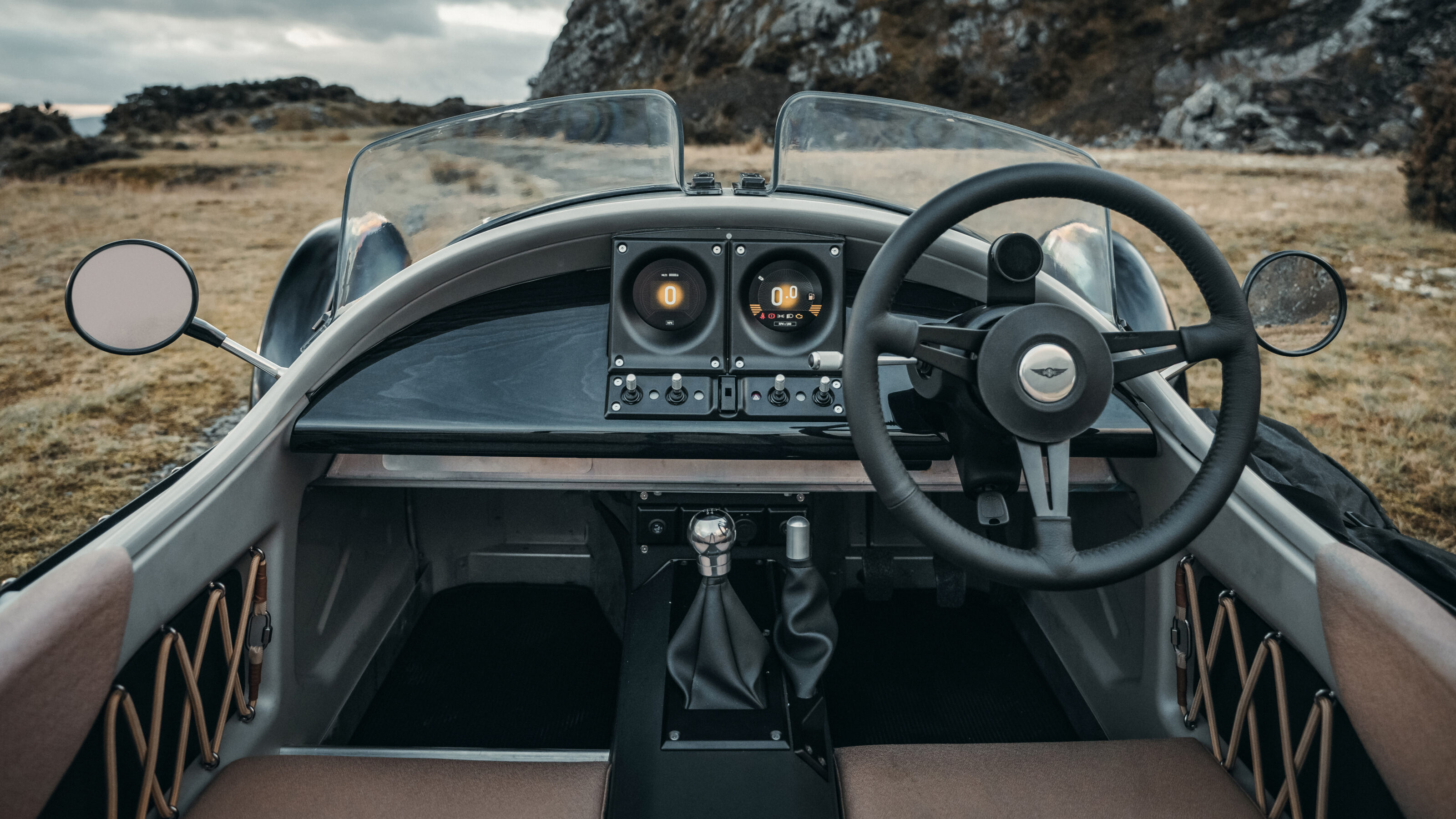
A non-structural one-piece aluminium floorpan allows for future powertrain upgrades, including full-electric drive.
Yes, Morgan has future-proofed the Super 3. The quaint, eccentric, family-owned carmaker once renowned for steadfastly ignoring modern trends has changed a lot since Investindustrial, a private equity firm founded by Italian businessman Andrea Bonomi, took a controlling share in 2019.
Morgan initially considered using a motorcycle engine to power the Super 3. The S&S V-twin that powered the 3 Wheeler, originally designed by a group of Harley-Davidson engineers, was not an option as it would not meet upcoming emissions regulations.
Other modern motorcycle engines had integral sequential-shift transmissions that would have been difficult to use in a vehicle with a steering wheel and foot pedals.
Instead, the Super 3 is powered by a naturally aspirated version of the light and compact 1.5-litre three-cylinder Ford engine from the Fiesta ST (where the presence of a turbocharger more than makes up for its relatively small capacity). There’s history here, though: The F-Series Morgan Three-Wheeler built between 1933 and 1952 was powered by Ford side-valve engines.
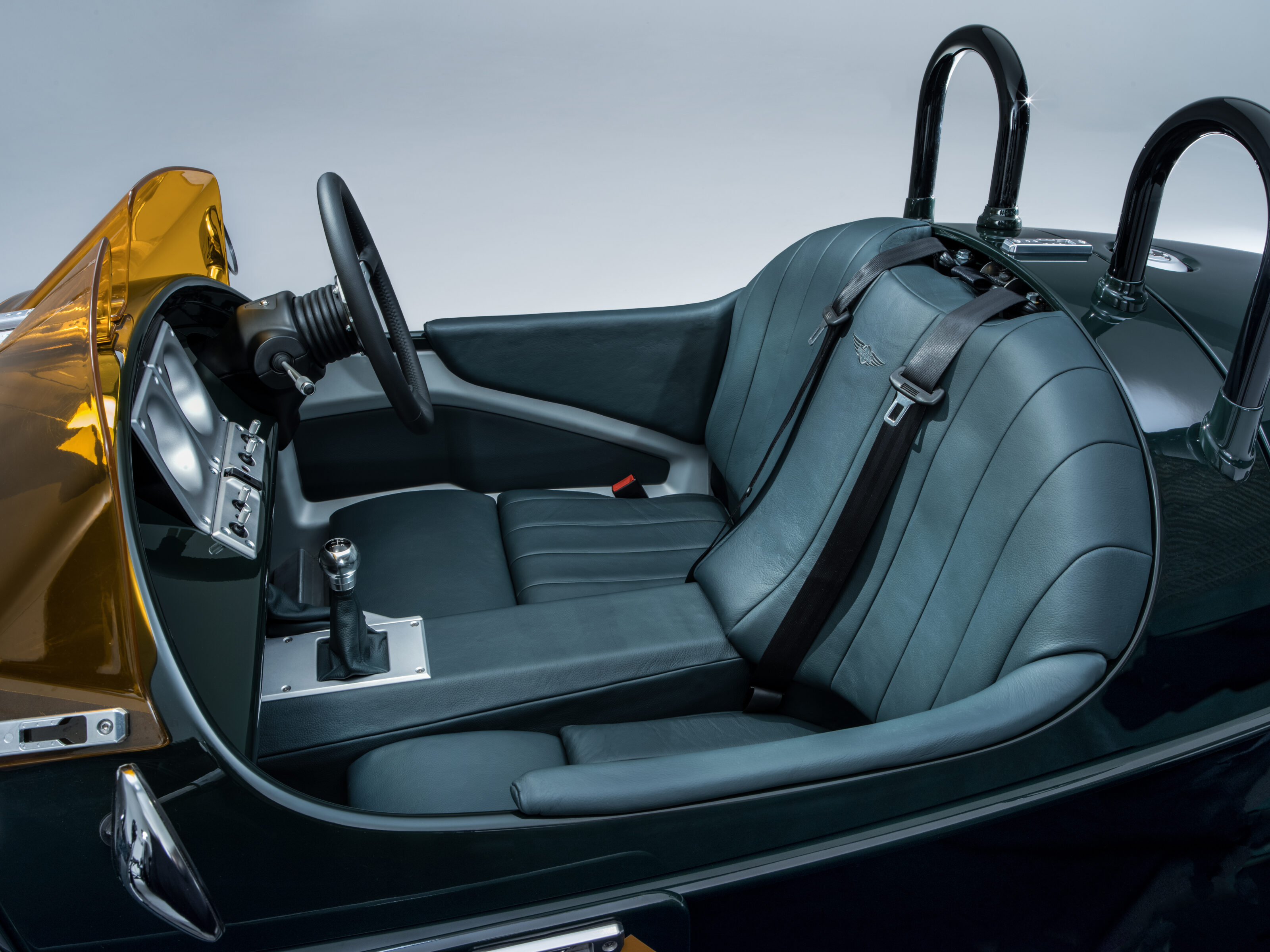
The engine drives the single rear wheel through a Mazda MX-5 five-speed manual transmission that’s connected to a bevel box and carbon-fibre reinforced drive belt. It makes 87kW at 6500rpm and 150Nm at 4500rpm, which doesn’t sound all that exciting until you realise the Super 3 weighs less than 650kg.
Morgan claims a 0-100km/h acceleration time of 7.0 seconds, and a top speed of 210km/h. In a tiny, 3581mm-long car with no roof and vestigial aero screens (if you order them; they’re optional) that’s going to feel Ferrari fast as it skims over the tarmac.
Keeping the Super 3 as compact as possible while allowing for improved interior room compared with the outgoing 3 Wheeler meant locating the cooling radiators on either side of the engine. That, in turn, required placing large, rectangular ‘barge boards’ along the sides of the car to manage the airflow through them.

At first glance, these barge boards are perhaps the most jarring elements of the design, but Morgan has embraced their presence. A patented clip system – Morgan’s first-ever patent – allows specially designed hard cases, waterproofed soft bags or racks to be attached to the side of the car.
The clips, and the hardware that attaches to them, have been homologated to carry 20kg.
Like the 3 Wheeler, the Super 3 does not have a roof of any kind. But the interior has been designed to cope with the elements. The seats can be trimmed in water-resistant leather or a new vegan technical fabric that is 100 per cent waterproof and can be cleaned with bleach.
The digital instruments, located in cast aluminium pods at the centre of the dash, and all the switchgear are not just waterproof, but can even withstand a quick blast from a jetwash.
The seats are fixed, both to reduce weight and complexity, but also to ensure the mass of the occupants remains in the same place in the chassis, critical in a three-wheeler. Because the seats don’t move, the floor-hinged pedals can be adjusted fore-and-aft to accommodate drivers of different sizes.
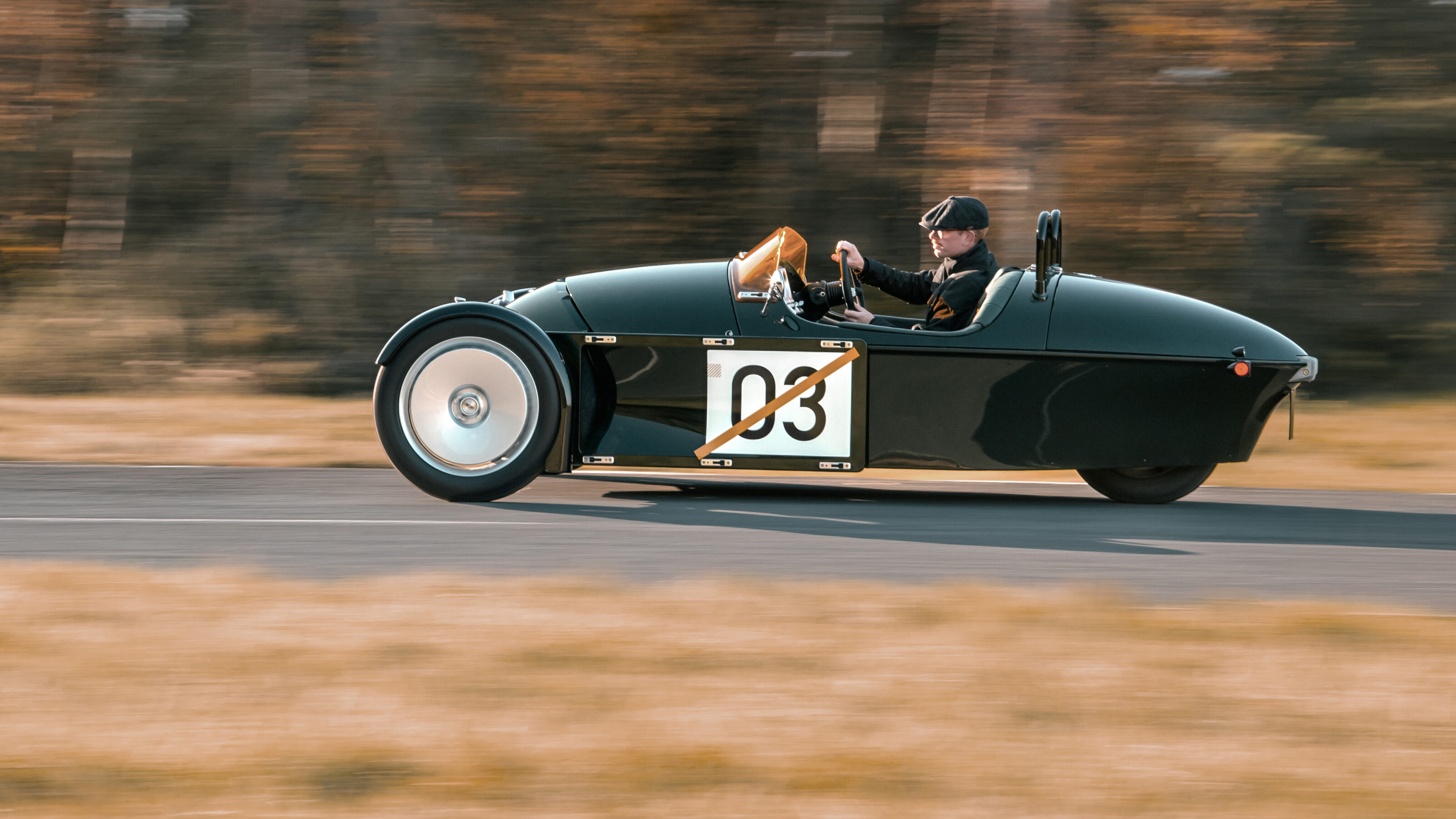
A steering wheel by iconic 60s British manufacturer Moto-Lita is bolted to a reach and rake adjustable steering column. The column, the top of which is shrouded by one of just a handful of plastic components on the Super 3, has been designed so it meets Australia’s occupant safety standard without the need for an airbag.
“There’s nothing on this car that doesn’t need to be there,” says Jonathan Wells. The vertical cast aluminium element at the centre of the mesh grille, for example, connects to the top mount of the engine.
The cast aluminium piece at the rear of the Super 3 not only ties the body structure together, but also provides the hinge for the rear wheel cover, the lower mounting point for the optional CNC-machined luggage rack, and the location for the fog and reversing lights.
There’s also no wood to be seen on the Super 3 – anywhere.
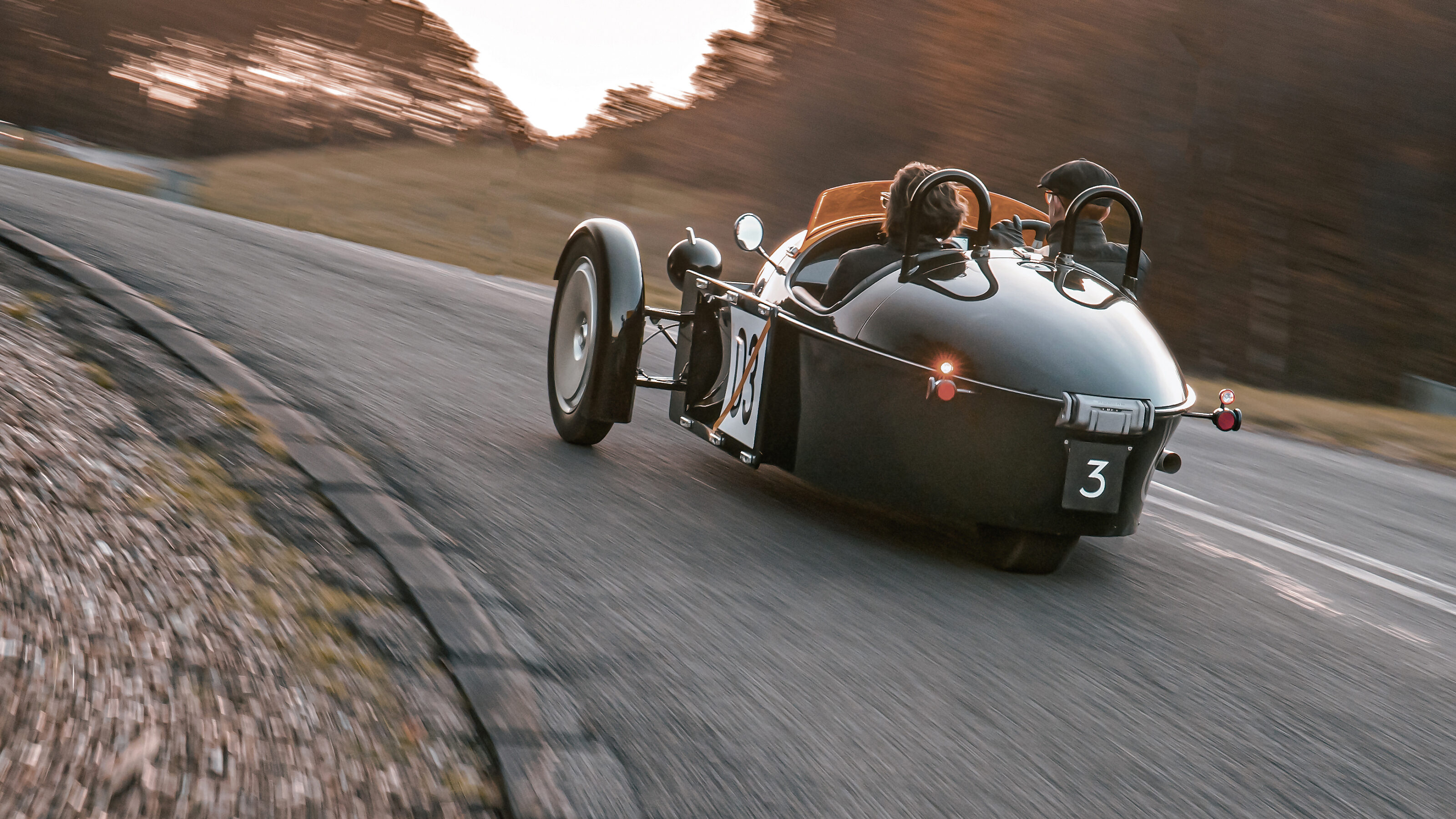
“Someone asked: ‘Where’s the wood going?’,” Wells recalls, “so we called a meeting to discuss it. Then we realised it didn’t need any, so it was a very short meeting.”
If you do want wood on your Super 3, though, you can order it as a veneer on the dash. As you’d expect of a Morgan, the hand-built Super 3 will be highly customisable, with more than 200 available options.
Morgan will at launch offer three ‘character’ themes: Contemporary, which combines brighter exterior colours with the dark finish on the wheels and other cast aluminium parts, plus the textile interior; Classic, which has silver wheels and aluminium bits and leather trim in the cockpit; and Touring, which comes with the aero screens, rear luggage rack and side panniers.
Super 3 production is scheduled to start in April at Morgan’s factory in Pickersleigh Road, Malvern, England, and will ramp up to a maximum of 15 cars per week within four to six weeks.
The first cars are scheduled to arrive in Australia in early 2023.
We recommend
-
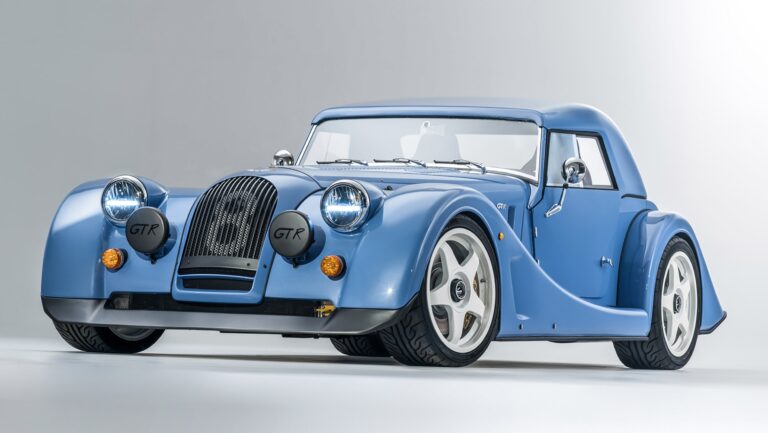 News
NewsMorgan Plus 8 GTR is a V8 swansong
Morgan produces the first of just nine limited-edition V8-powered GTRs
-
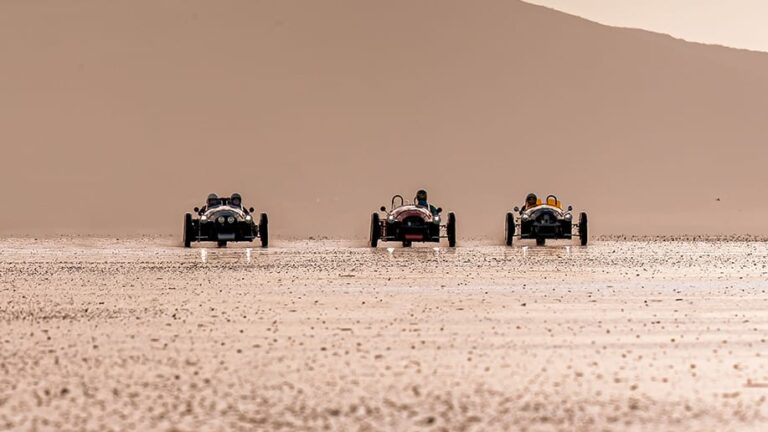 News
News2022 Morgan 3 Wheeler set for February reveal
Morgan's three-wheeled, three-cylinder model will launch late next month
-
 News
NewsWatch: Morgan releases Plus Four CX-T with overlanding focus
If you have a need to go off-road in a British sports car, Morgan can scratch your itch


